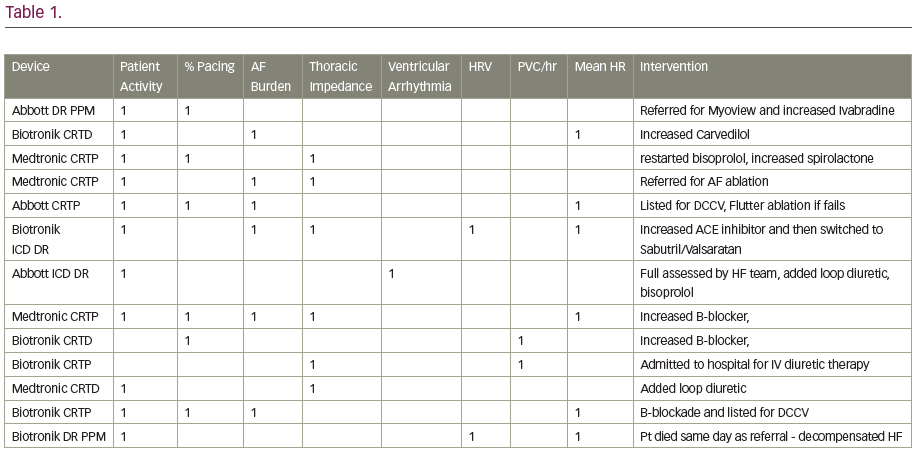Background: Remote monitoring of implantable cardiac devices allows the clinician to assess patients’ diagnostic device and physiological information without any direct patient interaction. Modern alert-based systems transmit information which can be indicative of a patient’s heart failure status, parameters such as intrathoracic impedance, heart rate variability (HRV), nocturnal heart rate, patient activity and atrial and ventricular arrhythmia burden. We sought to apply the IN-TIME parameters to all device patients.1
Method: Over the period of 1 year the principles of the IN-TIME study were applied to approximately 2,500 patients across all device manufacturers and device types followed up remotely. Table 1 displays the hybrid alert triggers which were used; these triggers were made more pragmatic than those used in IN-TIME, in an attempt to elicit a higher specificity of referrals to the heart function service in a real-world setting. Patients were referred into the HF team where 2 or more of the alert triggers were met within a rolling period of 2 weeks.
Results: Thirteen patients have been referred directly to the heart function team, resulting in 12 interventions. One patient was admitted to hospital from the community in decompensated HF, and one patient sadly died the same day as the referral due to sudden decompensated HF. The following table displays the positive remote parameters for each patient and underlines the intervention which was made for each referred patient. There have been no further HF hospitalisations within this detected patient group.
Conclusion: Application of this model to assess HF in device function remotely has demonstrated that it is possible to assess patients’ heart failure status remotely and accurately, in a real-world setting, albeit in an already well-developed remote monitoring service. Further work is required to assess the impact of remote HF detection on hospitalisation and also departmental work flow. One limitation of this study is that we have not addressed any HF hospitalisations or interventions made to this population which have not been detected via remote monitoring.








